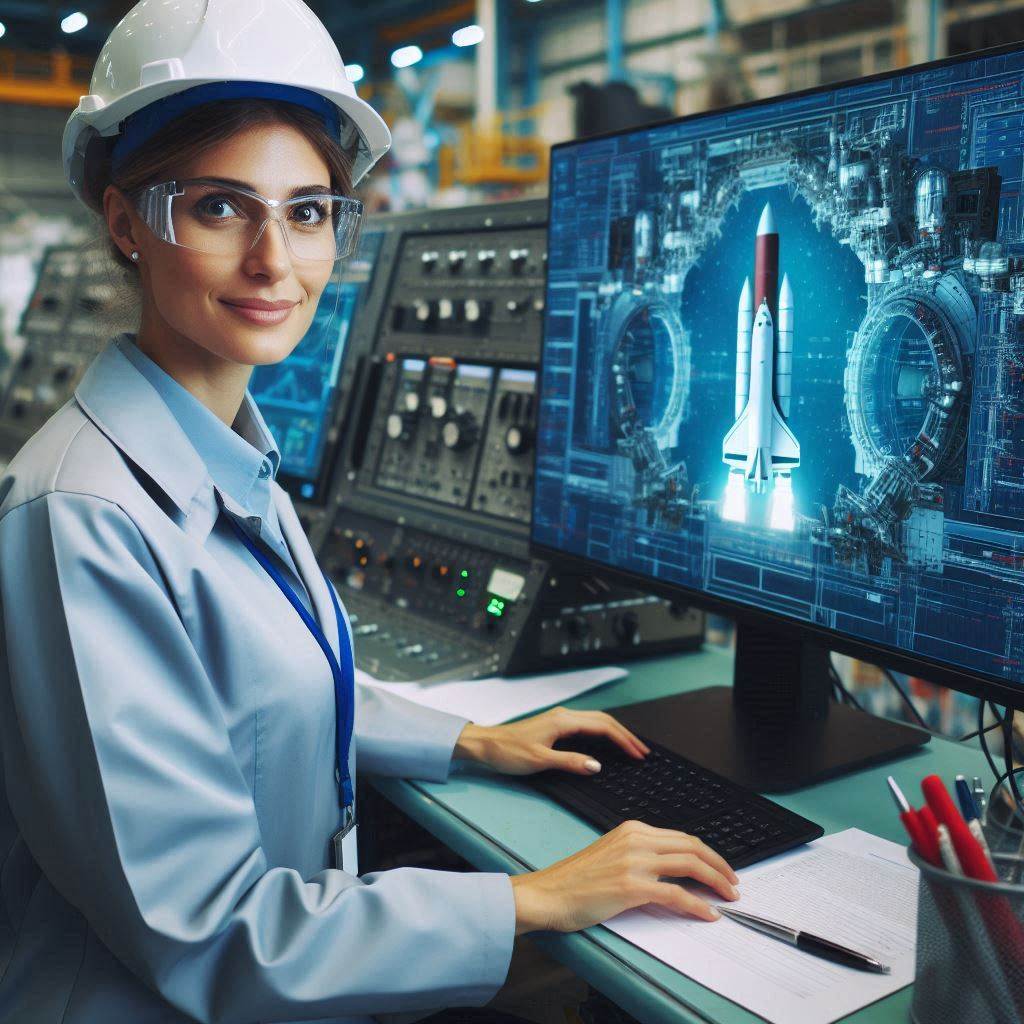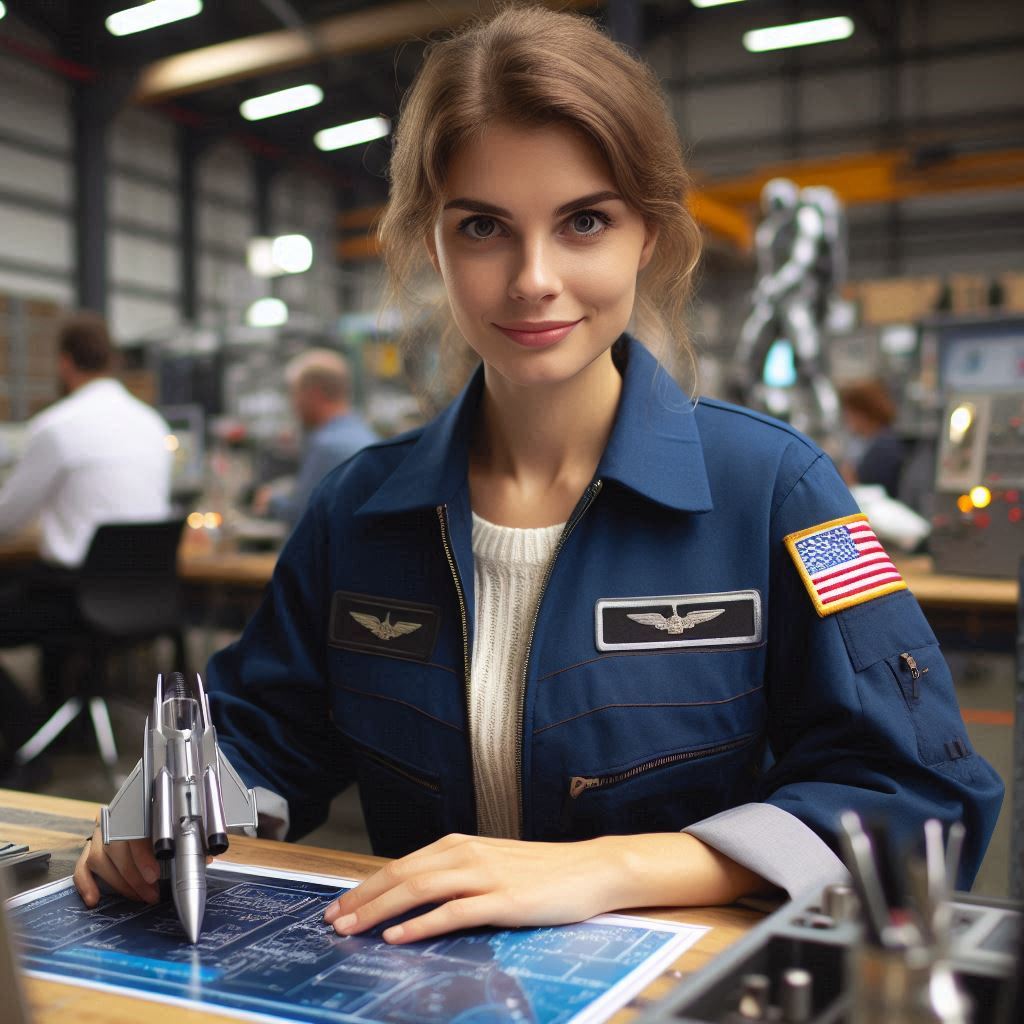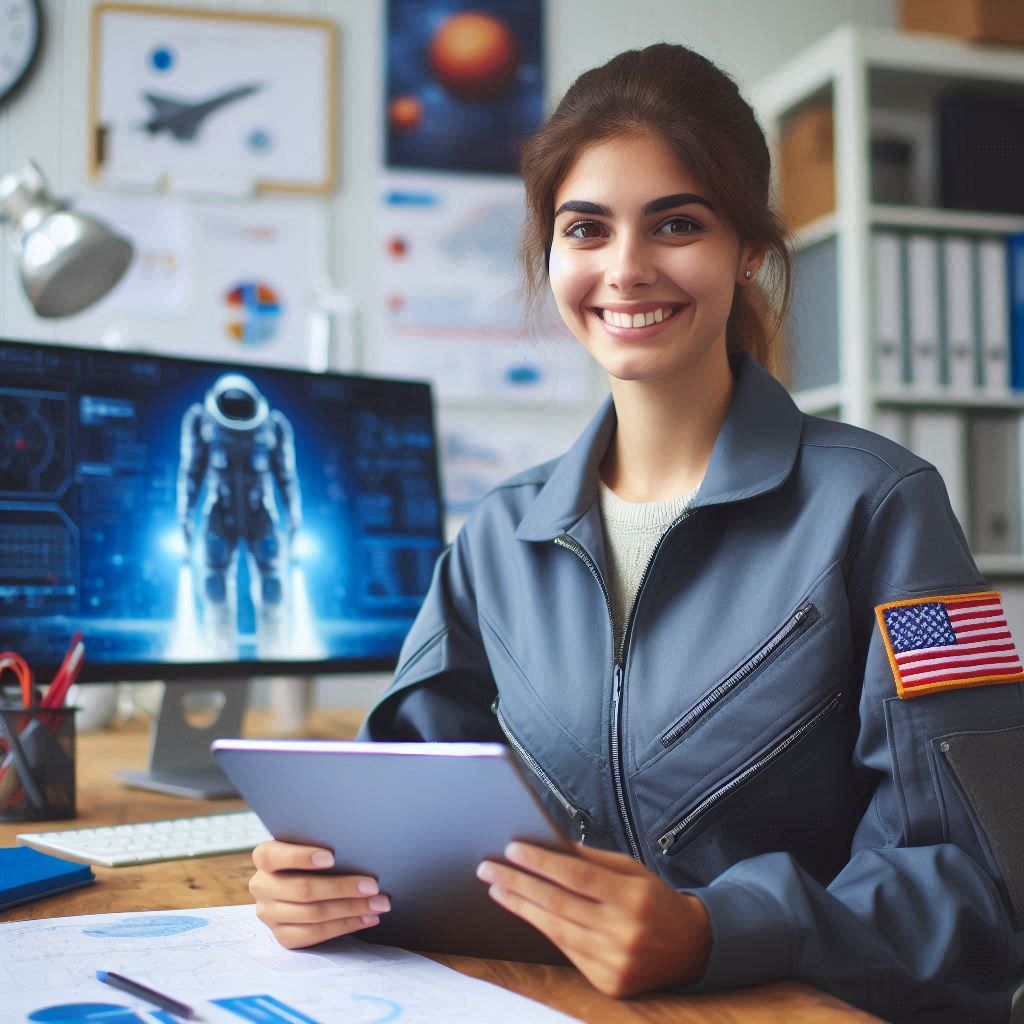Introduction
Aerospace engineers are fundamental to space exploration, designing and developing spacecraft, satellites, and essential technologies for missions beyond Earth.
Their expertise is critical for advancing space technology.
Allowing for deeper exploration of the cosmos, studying distant planets, and enhancing our understanding of the universe.
Aerospace engineers work on the intricate design and testing of spacecraft, ensuring they can withstand the harsh environments of space.
They focus on propulsion systems, navigation, structural integrity, and other vital aspects that make space travel feasible and safe.
Their work is not limited to manned space missions but also includes the development of unmanned probes, rovers.
Satellites that provide crucial data and communication capabilities.
Moreover, aerospace engineers contribute to the development of technologies for satellite communications, weather forecasting, and global positioning systems.
These technologies are essential for everyday life on Earth, highlighting the broader impact of their work beyond space exploration.
In this blog post, we will delve into the various roles aerospace engineers play in the realm of space exploration.
We will discuss the challenges they face, the innovative solutions they devise, and the significant impact of their work on advancing human capabilities in space.
By exploring these aspects, readers will gain a deeper appreciation of the essential contributions of aerospace engineers to our understanding and exploration of space.
History of Aerospace Engineering in Space Exploration
This historic event marked the beginning of human efforts to explore beyond our planet.
NASA played a significant role in sending astronauts to the moon.
The Apollo missions, starting with Apollo 11, successfully landed astronauts on the lunar surface.
Development of the International Space Station (ISS) is another milestone in space exploration.
Aerospace engineers contributed to the design, construction, and maintenance of this orbiting laboratory.
Exploration of Space Began with the Launch of Sputnik in 1957
The exploration of space began in 1957 with the Soviet Union’s launch of Sputnik.
Sputnik was the first artificial satellite to orbit Earth, marking the dawn of the space age.
This milestone spurred an era of rapid advancements in aerospace engineering and technology.
Aerospace engineers played a crucial role in designing, building, and launching these early spacecraft.
The success of Sputnik led to the development of more sophisticated satellites and space missions.
Engineers focused on overcoming the challenges of launching and operating spacecraft in the harsh environment of space.
These early achievements laid the foundation for future exploration beyond Earth’s orbit.
NASA’s Role in Sending Astronauts to the Moon
NASA was established in 1958, shortly after Sputnik’s launch, to lead the United States’ space exploration efforts.
One of NASA’s most significant achievements was the Apollo program, which aimed to land humans on the Moon.
Aerospace engineers were instrumental in the success of the Apollo missions.
The Apollo program required engineers to design and develop the Saturn V rocket, capable of carrying astronauts to the Moon.
They also developed the Apollo Command and Lunar Modules, which were essential for lunar landing and return.
The engineers’ work ensured the spacecraft’s safety, reliability, and ability to operate in the Moon’s environment.
In 1969, Apollo 11 successfully landed astronauts Neil Armstrong and Buzz Aldrin on the Moon.
This historic achievement was a testament to the expertise and dedication of aerospace engineers.
The Apollo missions continued, providing valuable scientific data and advancing human understanding of space exploration.
Development of the International Space Station
The International Space Station (ISS) represents a collaborative effort in space exploration, involving multiple countries and agencies.
Aerospace engineers have been integral to the design, construction, and maintenance of the ISS.
The ISS serves as a microgravity laboratory, allowing for long-term human presence in space.
Engineers designed the ISS to be modular, allowing for the addition of various components and modules over time.
This design flexibility has enabled continuous expansion and improvement of the station’s capabilities.
Engineers also developed systems for life support, power generation, and communication, ensuring the station’s functionality and safety.
The ISS has been instrumental in conducting scientific research, advancing technology, and fostering international cooperation in space.
Aerospace engineers continue to play a vital role in its operation and development, supporting missions and maintaining the station.
Aerospace engineers have been at the forefront of space exploration since the launch of Sputnik in 1957.
Their work has enabled historic missions, such as landing astronauts on the Moon and building the ISS.
Engineers have overcome numerous challenges in spacecraft design, propulsion, and life support systems, contributing to humanity’s quest to explore space.
The development of the ISS exemplifies the collaborative nature of modern space exploration, involving engineers from around the world.
As space exploration continues to advance, aerospace engineers will remain essential in designing innovative spacecraft and technologies.
Their contributions pave the way for future missions to Mars, the Moon, and beyond, expanding our understanding of the universe.
Education and Training Required for Aerospace Engineers
When it comes to space exploration, aerospace engineers play a crucial role in designing, developing, and testing spacecraft and related systems.
These engineers are responsible for ensuring the success of missions to outer space.
Whether it be sending satellites into orbit, exploring other planets, or even reaching beyond our solar system.
Bachelor‘s Degree in Aerospace Engineering or Related Field
A bachelor‘s degree in aerospace engineering is essential for a career in space exploration.
This degree provides foundational knowledge in physics, mathematics, and engineering principles.
Students learn about spacecraft design, propulsion systems, and orbital mechanics.
The coursework includes subjects like aerodynamics, materials science, and control systems.
During the degree program, students engage in practical projects and lab work.
These experiences help them apply theoretical knowledge to real-world problems.
A strong academic background in aerospace engineering is crucial for understanding the complexities of space missions.
Graduates with a bachelor‘s degree can work on initial design phases of spacecraft or support missions.
They contribute to developing systems that withstand space environments and perform as required.
This degree sets the stage for further specialization and advanced roles in space exploration.
Advanced Degrees and Certifications for Specialized Roles
Advanced degrees and certifications open doors to specialized roles in space exploration.
A master‘s degree in aerospace engineering provides deeper expertise in areas such as spacecraft systems or propulsion.
It allows engineers to focus on specific aspects of space missions.
A Ph.D. in aerospace engineering is essential for roles involving cutting-edge research and development.
It prepares engineers to lead innovative projects and contribute to breakthrough technologies.
Doctoral research often involves designing new spacecraft technologies or solving complex problems related to space exploration.
Certifications from professional organizations, such as the American Institute of Aeronautics and Astronautics (AIAA), enhance credibility and expertise.
These certifications demonstrate advanced knowledge and commitment to the field.
Specialized certifications in areas like spacecraft systems or mission planning can further refine an engineer‘s skills.
Hands-On Experience Through Internships or Research Opportunities
Hands-on experience through internships or research opportunities is crucial for aspiring aerospace engineers.
Internships provide practical experience working on real space missions or spacecraft designs.
They offer exposure to industry practices and professional networks.
During internships, engineers work on tasks like system testing, data analysis, or component design.
This experience helps them understand the practical challenges of space exploration and apply theoretical knowledge.
Internships also help build valuable skills and enhance resumes.
Research opportunities, such as working in university labs or with space agencies, offer additional hands-on experience.
Engineers engage in experimental work, simulations, and prototype development.
Research projects can lead to significant contributions to spacecraft design or mission planning.
Both internships and research opportunities provide a platform for collaboration with experienced engineers and scientists.
They offer insights into the industry‘s current challenges and technological advancements.
This experience is essential for developing the expertise needed to succeed in space exploration roles.
A career in space exploration requires a strong educational foundation, specialized advanced degrees, and hands-on experience.
A bachelor‘s degree in aerospace engineering provides the necessary groundwork.
Advanced degrees and certifications enable specialization and leadership in the field.
Hands-on experience through internships and research opportunities is crucial for applying knowledge and developing practical skills.
These experiences prepare engineers for the complex challenges of space exploration.
Contributing to the advancement of technologies that drive humanity‘s exploration of the cosmos.
Responsibilities of Aerospace Engineers in Space Exploration
When it comes to space exploration, aerospace engineers play a crucial role in designing, testing, and troubleshooting spacecraft and satellites.
Their responsibilities are vast and intricate, requiring a high level of expertise and precision.
Designing spacecraft and satellites
Aerospace engineers are tasked with designing spacecraft and satellites that can withstand the harsh conditions of space.
They must consider factors such as temperature fluctuations, radiation exposure, and gravitational forces when creating these vehicles.
Additionally, they need to ensure that the spacecraft are equipped with the necessary technology to carry out specific missions, conducting experiments, or deploying satellites into orbit.
Conducting simulations and testing
Before a spacecraft is sent into space, aerospace engineers conduct extensive simulations and testing to ensure its functionality and safety.
They use sophisticated software programs to simulate the conditions of space and assess how the spacecraft will perform under different scenarios.
Through testing, engineers can identify any weaknesses or potential issues with the spacecraft and make necessary adjustments to improve its performance.
This phase is crucial in ensuring the success of a mission and the safety of astronauts on board.
Monitoring and troubleshooting technical issues during missions
During space missions, aerospace engineers are responsible for monitoring the spacecraft’s performance and troubleshoot any technical issues that may arise.
They work closely with mission control to assess the situation and develop solutions to resolve problems.
Transform Your Career Today
Unlock a personalized career strategy that drives real results. Get tailored advice and a roadmap designed just for you.
Start NowEngineers rely on real-time data and communication systems to diagnose issues and implement corrective actions to ensure the mission’s success.
Their quick thinking and problem-solving skills are essential in addressing unexpected challenges in space.
Generally, the responsibilities of aerospace engineers in space exploration are diverse and demanding.
From designing spacecraft to conducting simulations and troubleshooting technical issues during missions.
These professionals play a vital role in advancing our understanding of the universe.
Their contributions are instrumental in the success of space exploration endeavors and pave the way for future discoveries in outer space.
Read: Freelance vs. Firm: Career Paths for US Architects
Collaboration with other Professionals in the Space Industry
One of the key aspects of the work of aerospace engineers in space exploration is collaboration with other professionals in the space industry.
This collaboration is essential for the success of any space mission and involves working closely with various experts and teams.
Working with astronauts, scientists, and mission control teams
Aerospace engineers often work closely with astronauts, scientists, and mission control teams to design and plan space missions.
They provide valuable technical expertise and support to ensure that the mission is executed successfully.
Engineers collaborate with astronauts to understand their needs and requirements for space travel.
Well as with scientists to integrate the necessary equipment for conducting research in space.
They also work closely with mission control teams to monitor and troubleshoot any technical issues that may arise during the mission.
Partnering with aerospace companies for production and launch of spacecraft
In addition to working with other professionals, aerospace engineers collaborate with aerospace companies for the production and launch of spacecraft.
These partnerships involve designing, manufacturing, and testing spacecraft to ensure they meet the required specifications for space exploration missions.
Engineers work with these companies to develop innovative technologies and solutions that will enhance the performance and efficiency of spacecraft.
They also collaborate on the launch operations to ensure that the spacecraft is deployed successfully into space.
Contributing to international collaborations for space exploration missions
Aerospace engineers also contribute to international collaborations for space exploration missions.
These collaborations involve working with space agencies and organizations from different countries to plan and execute joint space missions.
Engineers bring their expertise to these collaborations to help develop advanced technologies and systems for space exploration.
They work with international partners to share knowledge and resources, as well as to promote scientific cooperation in space research.
Therefore, collaboration with other professionals in the space industry is essential for aerospace engineers in space exploration.
Working with astronauts, scientists, and mission control teams, partnering with aerospace companies.
Contributing to international collaborations are all critical aspects of the work of aerospace engineers in advancing space exploration and pushing the boundaries of human knowledge in the universe.
Read: Iconic US Buildings and the Architects Behind Them.

Technological Innovations and Advancements in Space Exploration
As aerospace engineers continue to push the boundaries of space exploration, they are driving significant advancements in technology.
These innovations are crucial for the success and sustainability of space missions.
Development of Reusable Launch Vehicles
One of the key advancements in space exploration technology is the development of reusable launch vehicles.
These vehicles have the ability to launch, deliver payloads into space, and safely return to Earth for reuse.
This breakthrough has drastically reduced the cost of launching missions into space, making it more economically feasible to explore beyond our planet.
Advancements in Propulsion Systems and Materials Science
Propulsion systems are essential for maneuvering spacecraft in the vast expanse of space.
Aerospace engineers are constantly improving these systems to increase efficiency, power, and reliability.
Additionally, materials science plays a critical role in developing spacecraft that can withstand the harsh conditions of space.
Innovations in lightweight and durable materials have enabled the construction of spacecraft that can endure long-duration missions in space.
Integration of Artificial Intelligence and Robotics in Space Missions
The integration of artificial intelligence (AI) and robotics has revolutionized space missions.
AI technologies enable autonomous decision-making capabilities for spacecraft.
Allowing them to navigate through space, gather data, and perform tasks without human intervention.
Robotics, on the other hand, provide the ability to conduct complex operations in space, such as repairing satellites or assembling structures.
Aerospace engineers are at the forefront of developing and implementing these technologies to enhance the efficiency and success of space missions.
Read: Economic Indicators and Their Influence on US Architects
Find Out More: How to Become a Professional Drafter: A Guide
Challenges Faced by Aerospace Engineers in Space Exploration
Mitigating risks of space travel for astronauts
As aerospace engineers push the boundaries of space exploration, one of the primary challenges they face is ensuring the safety and well-being of astronauts.
The harsh conditions of space, including microgravity, radiation exposure, and isolation, present unique risks that must be carefully managed.
From designing robust spacecraft and life support systems to developing emergency protocols and medical interventions.
Aerospace engineers play a critical role in mitigating these risks and ensuring the success of space missions.
Their innovative solutions and careful planning are essential for protecting the lives of astronauts and enabling them to explore the cosmos with confidence and security.
Addressing environmental concerns related to space debris
The proliferation of space debris poses a significant threat to current and future space missions.
Aerospace engineers are at the forefront of efforts to address this growing problem.
With millions of man-made objects orbiting the Earth, from defunct satellites to fragments of rockets, the risk of collisions in space has never been greater.
Aerospace engineers are tasked with developing strategies to track, monitor, and mitigate the impact of space debris on spacecraft and satellites.
They work on innovative technologies such as autonomous debris removal systems, passive debris mitigation measures.
International cooperation agreements to ensure the sustainability of space activities and protect critical assets in orbit.
By pioneering new solutions to manage space debris.
Aerospace engineers are helping to safeguard the future of space exploration and ensure the long-term viability of human presence in space.
Overcoming budget constraints and political obstacles
In addition to the technical challenges of space exploration.
Aerospace engineers must also navigate complex budgetary constraints and political obstacles that can impact the success of their missions.
Space exploration requires substantial financial investments, and aerospace engineers must work within limited budgets to achieve their goals.
They must prioritize resources, make strategic decisions, and demonstrate cost-effective solutions to gain support for their projects.
Moreover, political factors, such as shifting priorities, international cooperation, and regulatory frameworks, can also influence the direction and scope of space exploration initiatives.
Aerospace engineers must navigate these challenges, build consensus among stakeholders.
Advocate for the importance of space exploration to secure funding and political backing for their endeavors.
By effectively managing both technical and non-technical constraints.
Aerospace engineers can overcome these challenges and advance the frontiers of space exploration for the benefit of humanity and future generations.
Read: Post-Pandemic Design Trends: US Architects Adapt
Future of Aerospace Engineering in Space Exploration
Exploration of Mars and other celestial bodies
Aerospace engineers play a crucial role in designing spacecraft for missions to Mars and beyond.
They work on developing the propulsion systems and navigation technology needed for long-distance space travel.
These engineers also design the life support systems that will sustain astronauts during these missions.
Exploring Mars and other planets involves overcoming numerous technical challenges that push the boundaries of engineering.
From landing on the surface of Mars to collecting samples for analysis, aerospace engineers are at the forefront.
Transform Your Career Today
Unlock a personalized career strategy that drives real results. Get tailored advice and a roadmap designed just for you.
Start NowExpansion of commercial space travel opportunities
The future of aerospace engineering in space exploration also includes the growth of commercial space travel.
Companies like SpaceX and Blue Origin are driving this expansion by offering private spaceflight opportunities.
Aerospace engineers are involved in designing spacecraft that can transport paying customers to space.
They are developing reusable rockets and innovative spacecraft designs to make space travel more accessible.
The collaboration between government space agencies and private companies will open up new possibilities for exploration.
Continued research and development of advanced space technologies
Aerospace engineers are constantly researching and developing new technologies to advance space exploration.
They are working on advanced propulsion systems that could enable faster travel to distant planets.
Engineers are also exploring the use of artificial intelligence and robotics for autonomous space missions.
Developing cutting-edge materials and technologies is essential for future space exploration missions.
The field of aerospace engineering will continue to evolve as we reach further into the cosmos.
Most Importantly, the future of aerospace engineering in space exploration is exciting and full of possibilities.
From exploring Mars to expanding commercial space travel opportunities, engineers play a crucial role.
The continued research and development of advanced space technologies will drive innovation in the field.
Aerospace engineers will be at the forefront of these advancements, pushing the boundaries of what is possible in space exploration.
Discover More: How Solar PV Installers Contribute to Energy Independence
Conclusion
Aerospace engineers play a pivotal role in space exploration, designing and testing spacecraft, satellites, and advanced propulsion systems.
Their expertise ensures that space missions are successful and that spacecraft can endure the harsh conditions of space.
They are responsible for developing cutting-edge technologies that enable space travel, satellite communications, and planetary exploration.
Investing in education and research is crucial for driving future advancements in space technology.
As aerospace engineers continue to push the boundaries of what is possible.
Their work requires a strong foundation in science, technology, engineering, and mathematics (STEM).
Supporting ongoing research and development helps to advance technologies that will drive the next generation of space exploration and discovery.
Aspiring aerospace engineers should be encouraged to pursue careers in the space industry.
Their passion and skills are essential for addressing the challenges of space exploration and contributing to humanity‘s knowledge of the cosmos.
By embarking on this career path, they can be part of groundbreaking missions that shape the future of space exploration.




